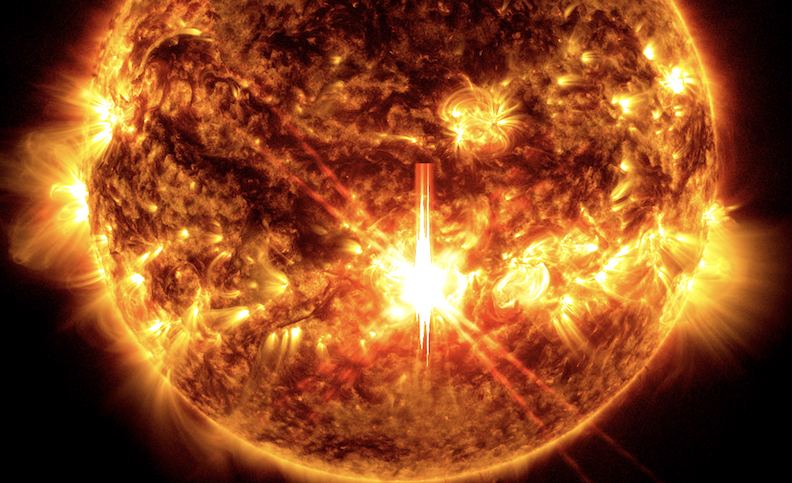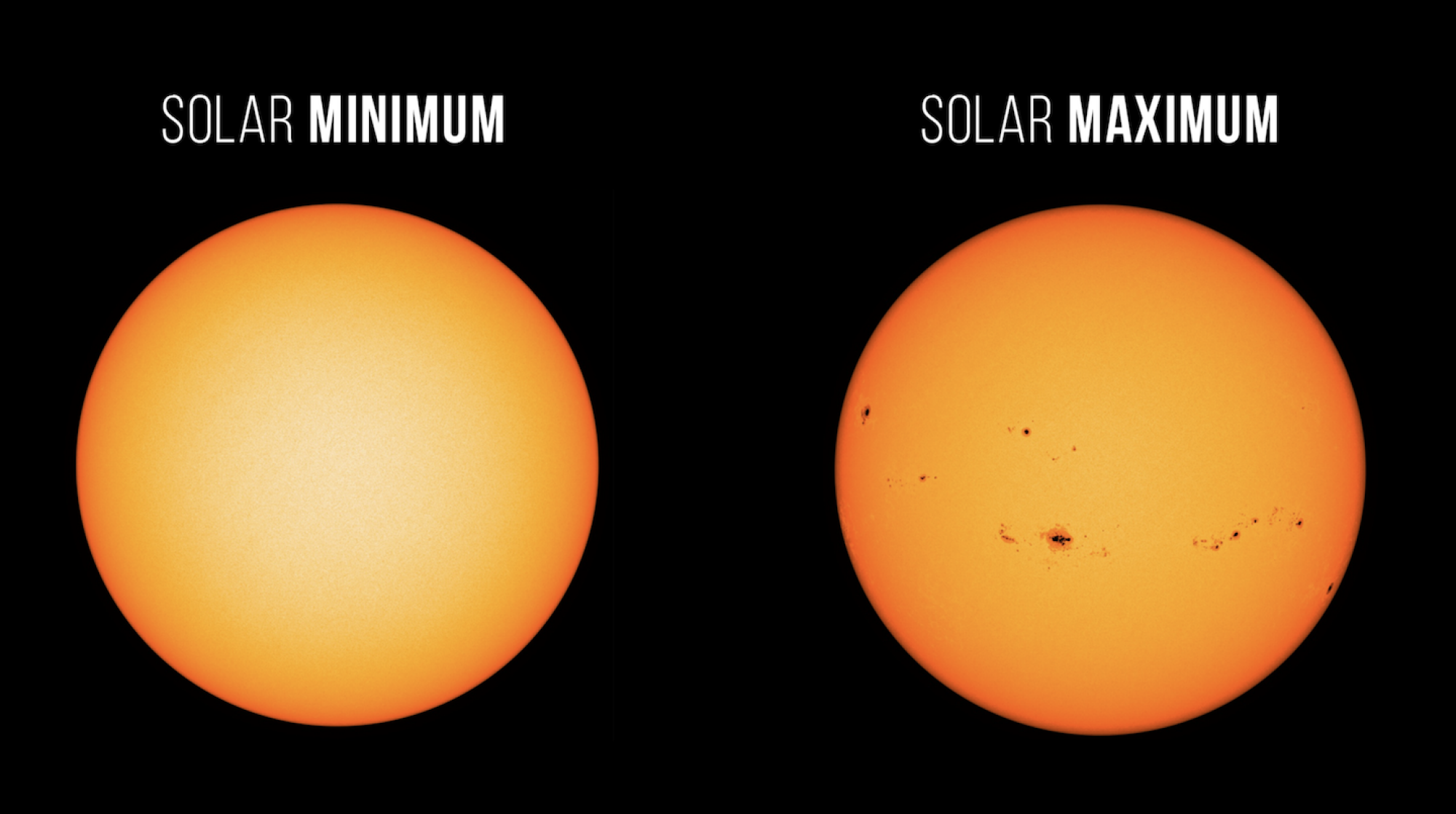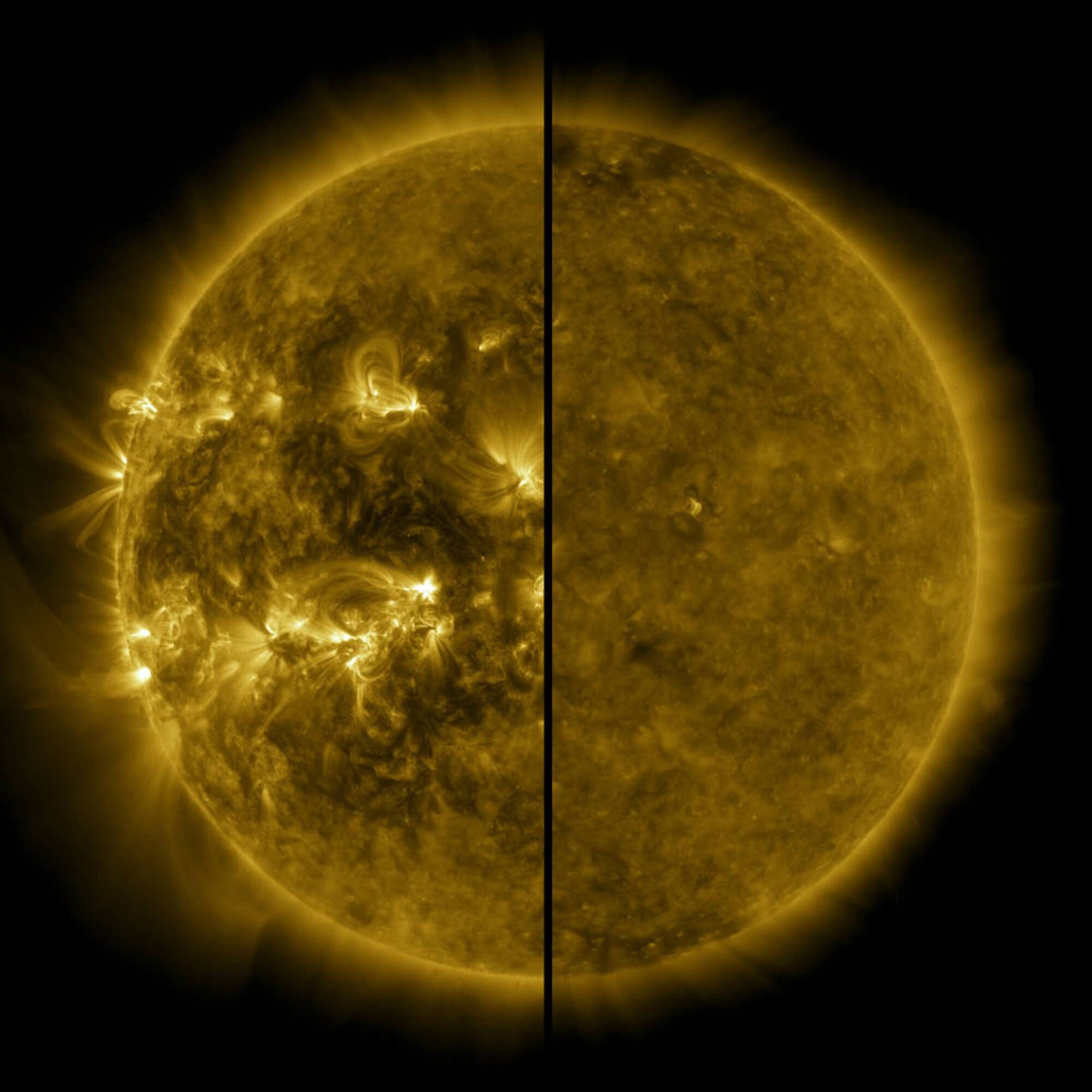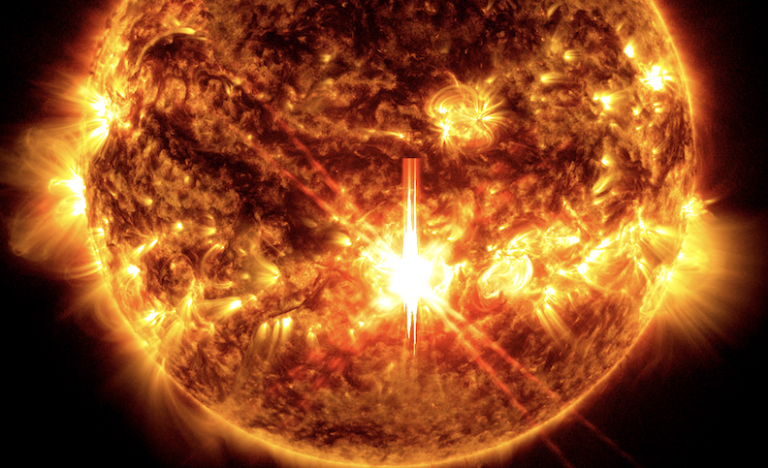
The colossal ball of hot gas at the center of our solar system will be lively for the next year, NASA said.
The sun has reached its “solar maximum period,” which is a state of heightened activity in its 11-year solar cycle. It’s normal, but will almost certainly bring more solar storms — the type that can disrupt our power grid and communication systems, but also light up the sky with brilliant auroras.
“It’s official: We have reached solar max phase!” the space agency posted online. “Expect solar eruptions, auroras, and more.”
Similar to storm seasons or climate patterns on Earth, the sun experiences a cycle of weather. The sun’s lasts for 11 years. During this pattern, solar activity increases for some 5.5 years, then decreases, then picks up again.
“It’s the space equivalent of hurricane season. We’re coming into another one,” Mark Miesch, a scientist with the National Oceanic and Atmospheric Administration’s Space Weather Prediction Center, told Mashable as solar activity ramped up.
Solar scientists observe sunspots — cooler regions on the sun’s surface that often spawn solar eruptions — to determine when the sun reaches the peak, or near peak, of its activity. (Literal solar maximum — the month that solar activity peaks — will occur during this period.) As shown below, more sunspots mean more activity.

Credit: NASA / SDO
The sun, a medium-sized star, has already manifested intense activity in 2024, producing magnificent Northern Lights. “During May 2024, a barrage of large solar flares and coronal mass ejections (CMEs) launched clouds of charged particles and magnetic fields toward Earth, creating the strongest geomagnetic storm at Earth in two decades — and possibly among the strongest displays of auroras on record in the past 500 years,” NASA said in a statement.
(When solar particles hit our planet, some are trapped by Earth’s magnetic field, where they travel to the poles and collide with the molecules and particles in our atmosphere. During this collision, these atmospheric particles heat up and glow.)
How solar storms impact Earth and people
There are different types of potentially problematic solar explosions that can affect Earth:
-
Solar flares: Explosions of light from the sun’s surface. Driven by the behavior of the sun’s magnetic field, they expel extreme amounts of energy (visible light, X-rays, and beyond) into space.
-
Coronal mass ejections (CMEs): These occur when the sun ejects a mass of super hot gas (plasma). “It’s like scooping up a piece of the sun and ejecting it into space,” NOAA’s Miesch explained. Sometimes solar flares trigger CMEs, and sometimes they don’t.
-
Solar energetic particle (SEP) events: These are essentially solar flares with lots of energetic particles. They’re especially dangerous to astronauts and satellites.
The big question is how different types of flares and radiation impact our lives. Fortunately, life on Earth is shielded from such particles and radiation. Our atmosphere protects us from things like X-rays and energetic particles emitted into space. Meanwhile, Earth’s potent magnetic field (generated by Earth’s metallic core) deflects many particles from solar storms and shields us from the sun’s relentless solar wind, a continuous flow of particles (electrons and protons) from our star.
Yet a spectrum of potential technological hazards, ranging in seriousness from briefly problematic to extremely damaging, can ensue when the likes of a strong solar flare or CME hits Earth. A powerful CME, for example, can induce intense currents in our power grids, among other deleterious impacts to satellites. Infamously, a potent CME in 1989 knocked out power to millions in Québec, Canada. The CME hit Earth’s magnetic field on March 12 of that year, and then, wrote NASA astronomer Sten Odenwald, “Just after 2:44 a.m. on March 13, the currents found a weakness in the electrical power grid of Quebec. In less than two minutes, the entire Quebec power grid lost power. During the 12-hour blackout that followed, millions of people suddenly found themselves in dark office buildings and underground pedestrian tunnels, and in stalled elevators.” Scary, indeed.

Credit: NASA / SDO
Crucially, even bigger solar storms are inevitable. The largest such episode ever observed was the Carrington Event, in 1859. The solar storms produced auroras so bright, they awoke Rocky Mountain gold miners at 1 a.m., and people could reportedly read newspapers by the eerie atmospheric light.
Such an event today — if not properly prepared for — could stoke widespread electrical blackouts and fry communications satellites. “If that were to occur today it would do a lot of damage,” Andrew Layden, chair of the Department of Physics and Astronomy at Bowling Green State University, told Mashable. “No one knows when that Carrington-level event is going to happen again.” A report from the National Academies says that an estimate of “$1 trillion to $2 trillion during the first year alone was given for the societal and economic costs of a ‘severe geomagnetic storm scenario’ with recovery times of 4 to 10 years.”
Thankfully, we have space weather prediction experts, such as those at NASA and NOAA, who can provide warning of an incoming blast of charged particles and radiation. Power utilities, for example, can temporarily shut down electric grids to avoid permanently-damaged infrastructure.
Enjoy the coming aurora. But don’t be surprised if the sun discharges billions of tons of solar matter, traveling millions of miles per hour, straight at Earth.






















0 Comments